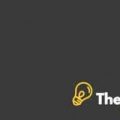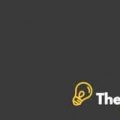Jet Blue Airline Case Study Solution
In 1999, David Neeleman established a new airline company named JetBlue Airline in the US. The main vision of Neeleman behind the incorporation was to bring back people towards air travel. He made effective efforts to grow his company. Currently, JetBlue Airline has an aircraft A320 which runs from JFK to Fort Lauderdale, Florida, Buffalo and New York. In the early stages, company used venture capitalists for financing purpose. It raised approximately 130 million from Weston Presidio Capital, Chase Capital Partner, and George Soros’s private equity firm.
In 2001, the attack of 9/11 created severe problems in the US.Many companies reported a loss in that year along with this many went bankrupt. JetBlue Air line managed itself effectively in this stiff environment and reported profits in that year along with this,it also took prudent steps to attract people towards air travel by installations of cameras in its craft and others. This positively affected the company and has given more opportunities for growth in the form of entry in other industries and countries.
However, to expand the business JetBlue Airline needs a huge amount of finance as venture capital’s position deteriorated due to 9/11 event, therefore, the company intends to raise finance through the IPO. However, SEC has many requirements which should be fulfilled before initiating an IPO which include a credible business plane, effective management team, relationship with investment banks and others.
In this report, we first analyze the internal and external environment of the company using SWOT model so that we can evaluate the effectiveness of the management.After that we financially analyze the company so that we can reach towards a position that how strong the company is in relation to investment banks (underwriters). Then we conclude our overall analysis and give a recommendation about the future strategies which should be followed by the company relating to the expansion and the initial offering price.
JET BLUE AIRLINE Harvard Case Solution & Analysis
Mission
A mission is a short statement that describes the purpose of the organization and identifies its products and services, customers, primary markets, sources of finance, core operations and geographical regions of the operations. (Williams, 2008)
Jet Blue’s mission is to bring back people to air travel hence its main operation is in the airline industry.It intends to use updated technologies and innovates its air crafts in a manner that can attract people towards it. Furthermore, the company operates in different cities of US like New York, Fort Lauderdale, Florida, and Buffalo. But to expand itself company intends to add further routes in its operations.The proposed routes are two cities of Florida (Orlando and Tampa), two cities of northern region(Rochester and Burlington, Vermont) and two California cities (Oakland and Ontario).
Moreover, in the early stage,JetBlue obtained finance through venture capitalists. But after the event of 9/11,venture capitalists’ portfolio reported a huge lose therefore, assistance from the mis forgone. To support the growth of the company and to overcome the losses of the venture capitalists company intends to raise funds through the Initial Public Offering (IPO).
SWOT Analysis
SWOT is a model which is used to analyze the internal and external environment of the organization.It has four elements Strengths, Weaknesses, Opportunities, and Threats. Strengths and weaknesses analyze the internal environment of the organization while opportunities and threats analyze the external environment of the organization. Strengths identify the factors which give essence over the competitors while weaknesses identify the factors which are resistance to the growth of the organization. Opportunities identify the factors which can be grasped by the organization to expand itself while threats identify the factors which can jeopardize the position of the company.(David W. Pickton, 1998)
Strength
After the 9/11 event, the economy of US deteriorated drastically.All industries faced severe problems in maintaining their positions. Like all the industries the airline industry was also affected by this event and most of the companies from this sector reported loss but in this stiff environment, JetBlue Airline reported profit and currently it still has potential of growth which indicates the effective management of the company.
Currently,Jet Blue’s cost per seat per mile is approximately 6.98 while the industry average is 10.08. The cost is significantly lower than the industry average which indicates an effective control over the cost. Hence by analyzing these two factors, we can conclude that JetBlue Airline has effective management.
Currently, JetBlue operates 24 air crafts. It flies 108 flights per day to 17 destinations this indicates that the company has good market share. Furthermore, it provides high quality of customer service as customer service is essential in airline industry.Therefore, we can say that company takes prudent steps to retain its customers which further indicates the effectiveness of management.
The air crafts of JetBlue are highly secured as they have automatic doors and there are cameras in the aircrafts. Along with this there are separate TVs at the back of the seats which gives essence to the company over its competitors.....................
This is just a sample partial case solution. Please place the order on the website to order your own originally done case solution.













